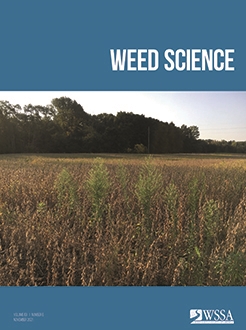Knotweed (Fallopia spp.) is an herbaceous perennial from East Asia that was brought to Europe and North America and, despite control efforts, subsequently spread aggressively on both continents. Data are available on knotweed's modes of sexual and asexual spread, historical spread, preferred habitat, and ploidy levels. Incomplete information is available on knotweed's current global geographic distribution and genetic diversity. The chemical composition of knotweed leaves and rhizomes has been partially discovered as related to its ability to inhibit growth and germination of neighboring plant communities via phytochemicals. There is still critical information missing. There are currently no studies detailing knotweed male and female fertility. Specifically, information on pollen viability would be important for further understanding sexual reproduction as a vector of spread in knotweed. This information would help managers determine the potential magnitude of knotweed sexual reproduction and the continued spread of diverse hybrid swarms. The potential range of knotweed and its ability to spread into diverse habitats makes studies on knotweed seed and rhizome cold tolerance of utmost importance, yet to date no such studies have been conducted. There is also a lack of genetic information available on knotweed in the upper Midwest. Detailed genetic information, such as ploidy levels and levels of genetic diversity, would answer many questions about knotweed in Minnesota, including understanding its means of spread, what species are present in what densities, and current levels of hybridization. This literature review summarizes current literature on knotweed to better understand its invasiveness and to highlight necessary future research that would benefit and inform knotweed management in the upper Midwest.
How to translate text using browser tools
13 September 2021
History of Knotweed (Fallopia spp.) Invasiveness
Dallas Drazan,
Alan G. Smith,
Neil O. Anderson,
Roger Becker,
Matthew Clark

Weed Science
Vol. 69 • No. 6
November 2021
Vol. 69 • No. 6
November 2021
Bohemian knotweed
giant knotweed
Japanese knotweed
Polygonum cuspidatum
Reynoutria japonica





